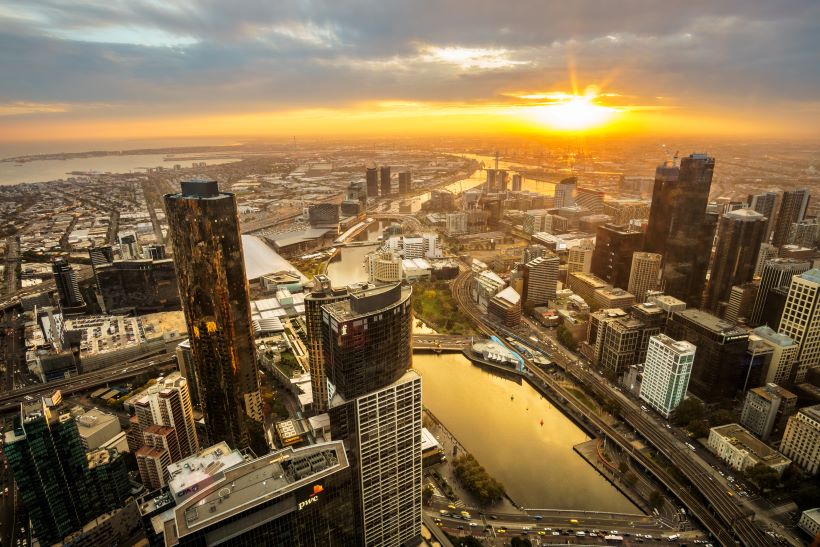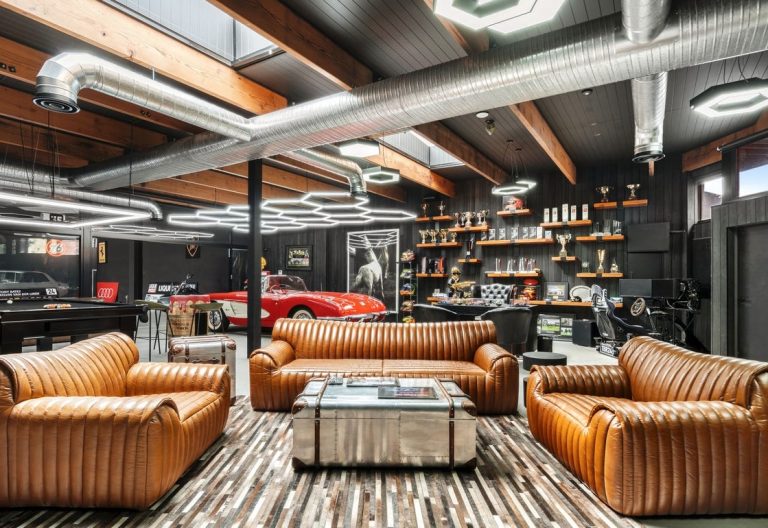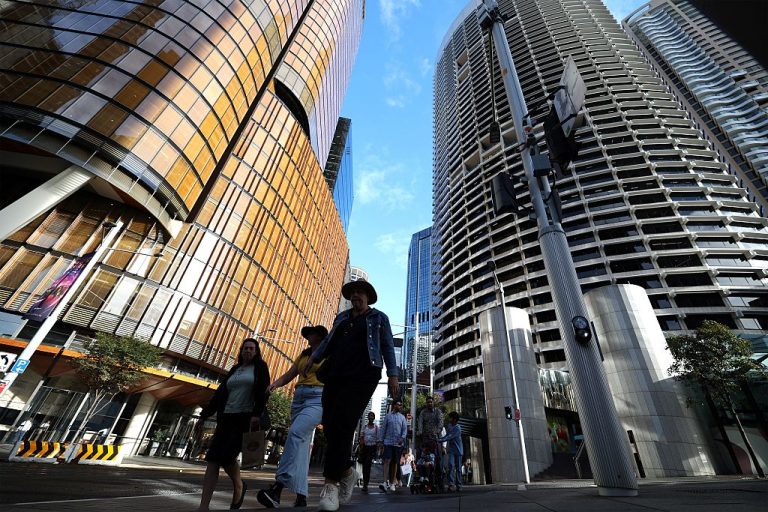Real estate, art and wine: How super-rich Aussies splash their cash

While they favour luxury homes and commercial real estate, Australia’s super-rich also enjoy splashing their wealth on passion purchases like wine, cars, private flights and art, even if it’s the crypto variety.
Australia’s ultra-wealthy people have been accumulating wealth faster than ever before, with their investments in property, stocks and luxury collectables helping to boost their fortunes.
According to Knight Frank’s The Wealth Report 2022, the wealth of Australia’s ultra-high-net-worth individuals (UHNWIs) now exceeds $863 billion and is expected to surpass $1.1 trillion by 2026.
Australia also has more UHNWIs – who have a net worth of $US30 million ($A40 million) or more, including their primary residence – and Knight Frank expects their number to grow from 20,874 currently to 27,330 people over the next five years.
“The greatest opportunities that UHNWIs have identified to grow their wealth in 2022 are in private equity, venture capital and technological adoption first and foremost, followed by real estate,” Knight Frank Australia head of residential research Michelle Ciesielski said.
The Wealth Report provides a glimpse into the world of the super-rich and where they invest their money, with luxury homes and commercial real estate high on the list.

Luxury homes and commercial property are high on the investment list for ultra-wealthy Australians. Picture: Getty
Luxury homes are the ultra-wealthy’s asset class of choice
Like super-wealthy people around the world, luxury homes are the asset class of choice for Australia’s UHNWIs.
They also like to have more than one luxury abode, with Aussie UHNWIs owning 2.8 homes on average in 2021.
According to The Wealth Report, 31% of ultra-wealthy Australians bought a home in 2021 – second only behind Hong Kong (37%).

There has been high demand for luxury homes by ultra-wealthy Australians. Picture: realestate.com.au/buy
Ms Ciesielski said ultra-wealthy Australians are transferring their wealth back to the cities while also investing in second homes.
“The use of second homes for longer periods was supercharged in 2021 as flexible working grew and homeowners looked to decamp for periods of time,” she said.
On average, 32% of the wealth of Australian UHNWIs is directly allocated to property for their principal and second homes.
“The high demand for luxury homes has seen a literal race for space, with ultra-wealthy Australian buyers competing for large waterfront plots in Sydney, and large apartments with roof terrace, balcony or outdoor space,” Ms Ciesielski said.

Ultra-wealthy Australian buyers have been competing for large waterfront blocks in Sydney. Picture: Getty
The luxury end of the market has performed particularly strongly during the housing boom, which Knight Frank expects to continue this year.
“In 2022, we will see the luxury housing boom endure, with more cross-border transactions as conditions return closer to pre-pandemic levels, and we are likely to continue to see demand for our cities grow,” Ms Ciesielski said.
She said 28% of Australian UHNWIs plan to buy a home in 2022, adding ultra-wealthy buyers are also seeking homes with a significantly reduced impact on the environment.

The luxury housing boom is expected to continue. Picture: realestate.com.au/buy
The Knight Frank Attitudes Survey showed property remains a cornerstone of wealth for the super-rich, with almost two-thirds of UHNWI wealth allocated to property, on average. A third is held in principal and second homes, with the remainder invested directly or indirectly into investment property.
Knight Frank found Australian cities recorded 12.3% growth in average prices for prime residential property – the most desirable and most expensive property or top 5% of each market by value – in 2021.
Record private investment in commercial property
Knight Frank Australia chief economist Ben Burston said 2021 was a record year for private capital investment into commercial real estate.
“Real estate remains a cornerstone of many UHNWI investment portfolios, occupying a unique position somewhere between bonds and equities where it enjoys the upside of rising rents and values in times of economic expansion, but also security during times of volatility,” Mr Burston said.
“It’s likely that we will see eco-investing, inflation and asset rotation as the key investment drivers for commercial property investment this year.”

It has been a record year for private capital investment into commercial real estate. Picture: Getty
PropTrack economist Anne Flaherty said Australian commercial real estate is drawing more attention from private investors overall, who accounted for a record number of purchases last year.
“Rising inflation, increasing stock market volatility and geopolitical uncertainty are driving more investors to commercial real estate,” Ms Flaherty said.
“Against a positive economic backdrop, commercial real estate can provide an effective hedge against inflation as annual rent increases – often pegged to inflation – are built into lease terms.”
Mr Burston said on average, 37% of Australian UHNWIs investable wealth is allocated directly to commercial property.
“This investment has traditionally flowed into the major sectors – offices, retail and industrial – but private investors are increasingly seeking diversification into emerging sectors such as healthcare, data centres and agricultural land.”
Knight Frank research ranked industrial as the number one property sector ultra-wealthy Australians are currently investing in, followed by offices, retail, logistics and development land.

Industrial properties are the most in-demand assets with commercial property investors, including ultra-wealthy Australians. Picture: realcommercial.com.au/for-sale
Industrial also topped the list of property sectors Aussie UHNWIs are becoming more interested in, followed by logistics, agricultural, healthcare and data centres.
Ms Flaherty said the industrial sector is the most in-demand among private investors.
“Industrial properties have overtaken offices as the most in-demand assets with private investors, accounting for 34% of the volume of purchases last year (up from 29% in 2020).
“In a sign private investors are more optimistic about the future of the retail sector, retail assets accounted for 23% of their purchases in 2021, up from 16% in 2020.”
Ms Flaherty expects commercial property will remain in strong demand.
“Forecast economic growth and declining unemployment will support future demand for commercial real estate and are probably bolstering investor confidence,” she said.
Ultra-wealthy Aussies look at cryptoassets
It seems Australia’s super-rich have been caught up in cryptomania.
Knight Frank identified cryptoassets as a new asset class of interest in UHNWIs investment portfolios over the last year.
A higher proportion of Australian UHNWIs (27%) invested in cryptoassets in 2021 compared to the global average (18%) of UHNWIs who now own some kind of cryptocurrency or token.
Knight Frank’s Attitudes Survey found 16% of Australian UHNWIs are investing in non-fungible tokens (NFTs) compared to the global average of 11%.
The Economist magazine put the global value of cryptoassets at $US2.4 trillion ($A3.1 trillion) at the end of 2021, a 12-fold increase since early 2020.

A new asset class of interest for ultra-wealthy people is cryptoassets, including NFTs linked to digital artworks. Picture: Getty
There are now more than 8000 cryptocurrencies in circulation for investors to choose from, as well as myriad NFTs available to buy, Knight Frank noted.
According to The Wealth Report, one of the biggest trends in the global luxury collectables market has been the surge in sales of NFTs linked to digital artwork.
“Digital innovation helped to widen the pool of collectors, with the NFT boom encouraging a rise in new younger market entrants,” the report said.
The passion investments that bring joy to the ultra-wealthy
When it comes to the ultra-wealthy, there are the investments that deliver a big return on the investment and then there are the passion purchases – the investments motivated by the joy of ownership.
Whether it’s fine wine, flawless coloured diamonds, classic cars or luxury watches, the super-rich love it.

Ultra-wealthy Aussies like investments of passion such as fine wine. Picture: realestate.com.au/buy
Collectable watches and fine wine led the Knight Frank Luxury Investment Index globally, with those two objects of desire recording average growth of 16% in 2021. The art market delivered 13% returns.
Ultra-wealthy Australians allocated 16% of their wealth towards investments of passion in 2021, the equivalent of at least $A5 million a year. Half of Australia’s UHNWIs also indicated their spending on these passion purchases had increased.
Ms Ciesielski said Australian UHNWIs are considered to be some of the world’s most passionate investors.
“The appetite for the finest watch examples remains insatiable and whilst supply chain issues still linger, the ultra-wealthy are also ramping up their collections of premium alcohol brands.”
Knight Frank’s survey of 600 private bankers and wealth advisers showed that spending on luxury investments increased on average by 25% globally last year, with art, classic cars and jewellery the most popular investments.

Cars rank highly among luxury investments for ultra-wealthy people in Australia and around the world. Picture: realestate.com.au/buy
Art and cars also top the picks for Aussie UHNWIs, with wine coming in third.
It seems nothing is off limits when it comes to luxury collectables for the world’s super-wealthy people.
“The COVID-19 pandemic certainly hasn’t dented the enthusiasm of collectors who have continued to pay significant amounts of money for an increasingly eclectic mix of assets including basketball sneakers, comics and even meteorites,” said Andrew Shirley, editor of The Wealth Report at Knight Frank.
Globally, there has also been a superyacht boom with orders up by 6% in 2021.
Ms Ciesielski said Australia’s ultra-wealthy have also tapped into the private aviation sector, especially when travelling for leisure.

According to Knight Frank, Australia’s ultra-wealthy are spending more on private jet travel. Picture: Getty
“They are taking advantage of the premium experience, ease and flexibility of private aviation by enjoying weekends away around public holidays or popular sports and lifestyle events,” she said.
“In the past year, the Sydney-Melbourne route has been the most popular pair for private jet travel according to Wing X – evidence of the appeal of the convenience this mode of travel provides in Australia.”
As well as splashing more money on private jet travel and luxury collectables, ultra-wealthy Aussies have also given back more of their wealth for worthy causes.
Knight Frank said 57% of Australia’s UHNWIs increased their philanthropic activities in 2021 compared to the global average of 37%.







